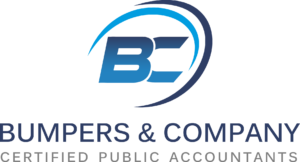With the release of the PPP Loan Forgiveness Application and related guidance, we now have some needed clarification – and yet are left with many unanswered questions. The rules continue to evolve as the 8-week coverage period approaches the finish line for some who qualified for the loans. While there are talks of expanding the 8-week period to 16-weeks and altering the 75% rule, these changes may come too late for many of you. We would, however, like to update you on what changes have already been approved and what we have learned from the new guidance.
- Alternative Payroll Coverage Period Option: While most will use the 8 week (56 days) period starting from the PPP loan disbursement date, the SBA did provide an alternative payroll covered period alternative, which allows a borrower to start their 8 week (56 days) period on the first day of their first pay period following their PPP loan disbursement date. Borrowers will need to determine which 8-week period provides for the best use of PPP funds and note that on the loan forgiveness application.
- Clarification Calculating FTEs (Full Time Equivalents): PPP recipients have two methods by which to calculate. Optimization between the two methods is needed to produce the best outcome and avoid portions of the loan not being forgiven.
- Method 1: For each employee, take the average number of hours paid per week and divide by 40, rounding the result to the nearest tenth. The maximum FTE value per employee must be capped at 1.
- Method 2: Assign a 1 for each employee working 40 hours or more per week and a 0.5 for any employee working fewer than 40 hours.
- FTE Safe Harbor: A borrower is exempt from a reduction in loan forgiveness if both of the following conditions are met: 1) The borrower reduced their FTE employee levels during the period beginning February 15, 2020 and ending April 26, 2020 and 2) the borrower then restored their FTE employee levels by no later than June 30, 2020 to the same FTE level recorded for the borrower’s pay period that included February 15, 2020. This could be significant for borrowers who might have been 1 or 2 FTEs shy of meeting the required number for loan forgiveness during their covered period.
- Potential FTE Exemptions: If any employee requested either to work reduced hours or not to work due to the virus, or if they denied an offer to return to work after being furloughed or laid off, the borrower may exclude that employee from the FTE calculation for the determination of loan forgiveness. Under both instances, documentation must be in writing and signed by the employee, whether it was a request for reduced hours or a signed formal refusal of an offer to return to work.
- PPP Payroll Calculation Assistance: We recommend that you check with your payroll provider to see if they have already established a worksheet you can use to pre-populate your payroll information and run through the various employee payroll calculations. As many companies are interpreting the rules differently, these standardized tools should be leveraged to review your options and verify you are calculating everything properly to maximize your forgivable portion.
- Clarification on Qualifying Cash Compensation: Compensation that can be used for PPP forgiveness purposes includes gross salary, gross wages, gross tips, gross commissions and bonuses. A word of caution when it comes to bonuses – make sure you can justify and substantiate the bonus if you intend to use PPP funds.
- Maximum Compensation per Employee: This is set at $15,385, which is predicated on an annual salary of $100,000 divided by 52 weeks and multiplied by 8. Borrowers will not be able to claim more than $15,385 per employee on the loan forgiveness application.
- Clarification on Some Nonpayroll Costs:
- Mortgage obligations and rent obligations include both real and personal property. For example, the interest paid on an automobile loan or the lease payment on a copier would qualify as a nonpayroll cost.
- Nonpayroll costs incurred and/or paid are eligible for forgiveness. For example, a borrower could pay May and June’s utility bills in the applicable covered period and also apply the portion of July’s bill that covered the applicable period. Prepayments that apply to periods beyond the cut-off date will not be forgivable.
- Documents Required for Forgiveness: Guidance was provided on the actual documents you will need to submit with the loan forgiveness application, such as third party payroll provider reports confirming cash compensation paid to employees, payroll tax forms for the 2nd Quarter, cancelled checks, bank statements, invoices, loan documents, lease agreements, etc. Refer to page 10 of the loan forgiveness application for more information on what will be required.
- PPP Document Retention: The borrower must retain all documentation related to the PPP loan for 6 years.
- EDIL Impact on PPP Forgiveness: The forgivable amount of the loan will be reduced by the amount of the advance received from the EDIL program. If the PPP loan was for $100,000 and the EDIL advance received was $10,000, the maximum PPP loan forgiveness will be $90,000.
- Forgiveness Determination Timeline: The banks will have 60 days to process the loan forgiveness application, make a determination and communicate the outcome to the borrower.
We recommend that you review the loan forgiveness application now. https:/home.treasury.gov/system/files/136/3245-0407-SBA-Form-3508-PPP-Forgiveness-Application.pdf
Please pay close attention to the formats required within the application and make note of the self-certifications that you are required to include. Assess and adjust your 8-week budget based on applicable information we have provided above as well as the information provided on the loan forgiveness application.
As always, we are here to assist our clients in any way we can, and helping you maximize you PPP loan forgiveness is no exception. Please feel free to reach out with any questions.


